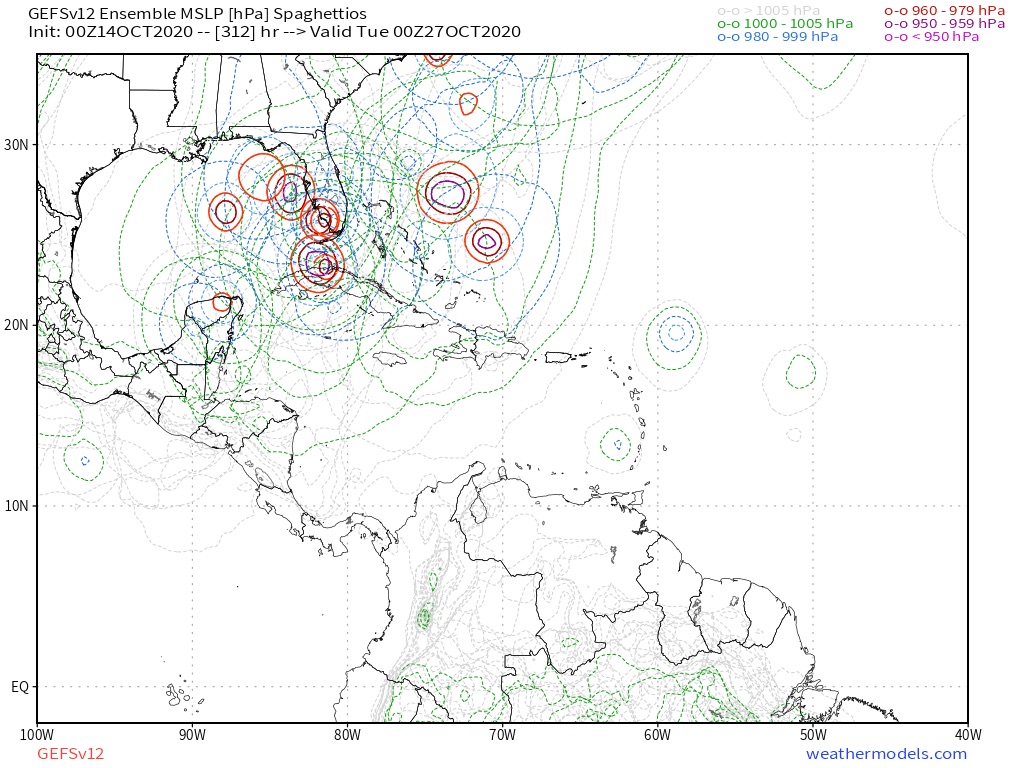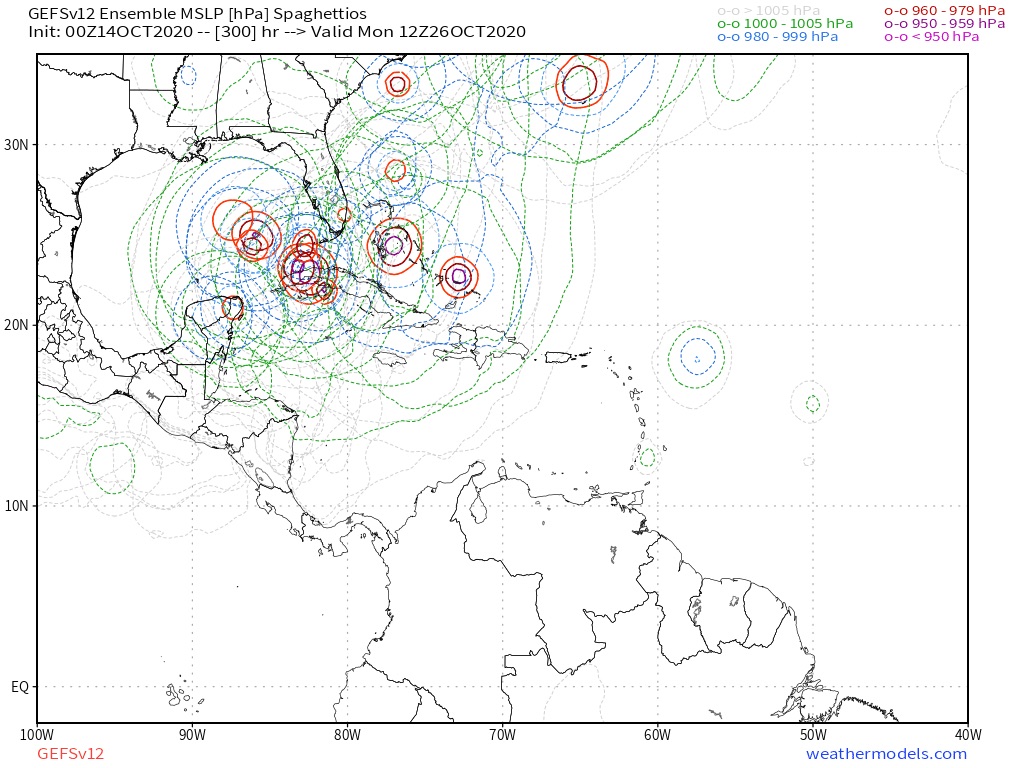mlfreeman wrote:Shell Mound wrote:LarryWx wrote:The following map of tracks taken for 10/21-31 geneses will be quite useful as regards chances of FL being hit from the W Caribbean. There are two pretty clearcut camps as regards Cuba. Not even one storm on record back to 1851 has crossed Cuba and then landfalled on FL. I was surprised to see this. All of the hits were from storms that either went around Cuba (like Wilma and the 1921 Tampa storm) or originated in the Gulf and all were, interestingly enough, moving ENE or E:
https://i.imgur.com/eTEzU4P.png
Of course that doesn't mean that there won't be an exception this time where one crosses Cuba, especially western Cuba, and then hits FL. I don't see why that isn't a reasonable possibility.
Based on the graph, the location of TCG is significant. The 12Z G(E)FS shows a system forming directly south of Jamaica on 21 October, whereas the 12Z ECMWF/EPS/GFS-P suggest TCG, if any, closer to Nicaragua. According to historical data, systems that formed south of Jamaica during the same timeframe stayed east of 80°W, crossed Jamaica and/or eastern Cuba, and missed the CONUS, whereas a secondary cluster, closer to Central America, tracked much farther west, toward the Yucatán Channel and southern Gulf of Mexico. Therefore, if our prospective system follows the latter solution/cluster (per EC/EPS/GFS-P) instead of the former (per G[E]FS), then it is much more likely to pose a threat to the CONUS. To summarise: TCG south of Jamaica, ~75–80°W, misses CONUS; TCG east of Nicaragua, west of 80°W, poses much greater threat to CONUS. Note, however, that while the EC/EPS/GFS-P suggest a greater threat to the CONUS, they also show a much weaker system than the G(E)FS, suggesting much stronger VWS over the system.
The "east of Nicaragua, west of 80W" region you're describing sounds like the lesser known of the two Hebert Boxes.
https://upload.wikimedia.org/wikipedia/commons/a/a7/Hebert_boxes.jpg
I think the second Hebert box in the Western Caribbean isn’t as known for storms going on to impacting Florida unlike the first one in the NE Caribbean.













